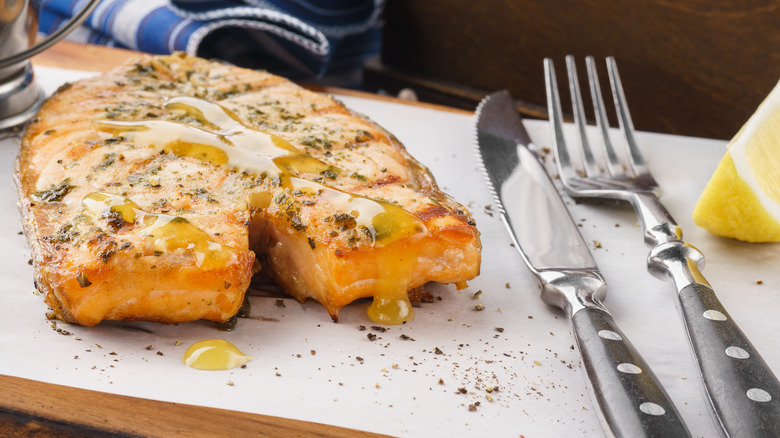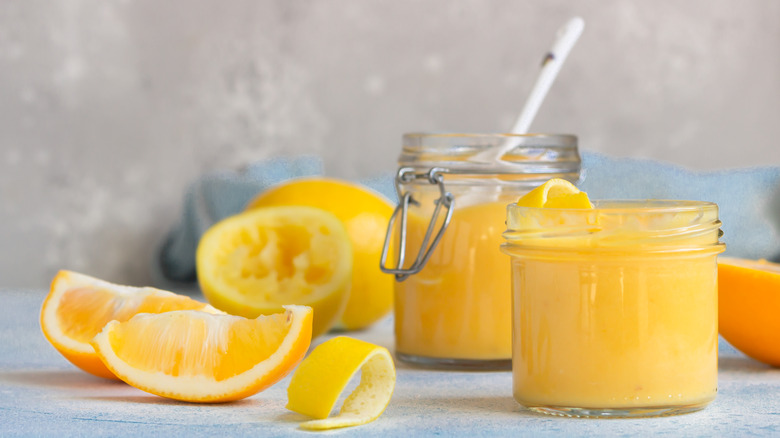Lemon Curd Is For More Than Dessert. Use It As A Savory Glaze
Lemon curd isn't a one-trick pony. In fact, that's far from the truth. Although you might be familiar with dolloping the sauce over decadent cakes or velvety ice cream, lemon curd is capable of so much more. When given the chance, the sweet and sour sauce acts as a stellar ingredient in savory applications, namely glazing meat — who would have guessed it?
At its most basic, lemon curd is made by mixing lemon juice and zest together with sugar, eggs, and butter. As luck would have it, these ingredients boast the necessary components (think: sweetness, fat, and a pop of acidity) needed to craft a successful glaze for meat. As a result, using lemon curd to lacquer protein is a no-brainer. It even serves a few functional purposes. In addition to encouraging caramelization, the sugary curd also creates a barrier that keeps the meat moist and tender.
What's more, using lemon curd as a savory glaze is even a waste-free way to creatively and effectively use up leftovers. Not only does the curd effortlessly add another dimension to dishes by brightening boring and bland dishes, but it perfectly balances ultra savory proteins with its sweetness and tang. Of course, before you start brushing on lemon curd without a second thought, there are some tips and tricks that will ensure the tastiest glaze ever.
How to use lemon curd as a savory glaze
The choice is yours when it comes to picking the right curd. Homemade or store bought, any kind of curd will work. Other citrusy variations can also make for a vibrant glaze, but we stand by lemon for its wonderfully bright profile. The only thing advice we have is to seek out options made with real sugar — this isn't the moment for sugar-free curd as it won't fully caramelize when slathered over proteins.
Yet, despite that the curd can be a one-ingredient wonder, there's an opportunity to further enhance flavor. Simply use it as a base for a sweet and savory glaze by mixing it with some spicy brown mustard, salty soy sauce, briny Worcestershire, funky miso, or even a splash of herb-infused oil to thin the sauce and offset sweetness. Then, build depth by whisking in other flavor-boosters like a sprinkle of smoked paprika, minced garlic, a few chiles, or some cracked white pepper. At this point, you get to glazing.
There are two ways you could go about glazing. First, you could use the curd to massage and marinate pork ribs, chicken thighs, salmon filets, or hunks of tofu. Otherwise, apply the glaze towards the end of cooking to avoid any burning. Regardless of what you decide, be sure to cover every nook, cranny, and corner for the best flavor. After all, you wouldn't want any of that citrusy curd to go to waste!

